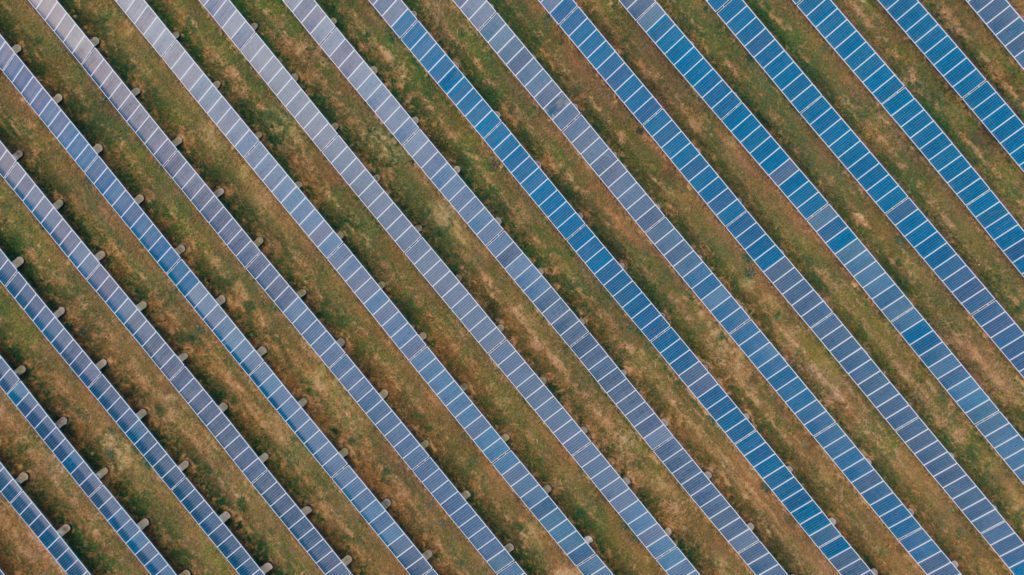Solar panels have been becoming increasingly popular in the past 40 years. As this trend continues, you might ask yourself how solar panels work, why they are becoming popular, and if you should spend your money on them. A solar panel utilizes the photovoltaic process where photovoltaic cells, a technology that includes semiconductors like silicon, are transferred from solar power to DC electricity, and then to AC electricity using an inverter [1]. “Solar power is more affordable, accessible, and prevalent in the United States than ever before [2],” and the prices of solar panels are dropping rapidly [3].
How do solar panels work? As mentioned before, solar panels use something called the photovoltaic process. The panels have three layers that work to create an electrical field that will accept positively charged particles and reject negatively charged particles. Then, when the light is of the right wavelength, the positively charged particle will be accepted by an atom of the conducting material. This leaves the atoms in the conducting material in an excited state, or a state of higher charge than before. Each layer of the semiconducting material has a positive and negative end that forms an electrical circuit. The photovoltaic process provides the electricity in the form of DC electricity. From there, the DC electricity needs to be converted to AC electricity. This will be done using a solar inverter. In summary, solar panels work by allowing sunlight to hit the panels where the light is turned into DC electricity, and a solar inverter converts DC to AC which is used for everything in your home [3].


Solar power has many factors that affect its efficiency. For example, like most electronics, solar panels are more efficient in colder weather than warm; however, that does not necessarily mean they are more efficient in the winter rather than summer because the sun is more prevalent in the summer than winter [3]. Prices of solar panels are also becoming more and more affordable each year. The average cost has dropped over 20% in the past 5 years [5] and almost 70% since 2014 to the point where they are now competitive with other forms of energy in terms of price. In 2008, the U.S. solar capacity was only 0.34 GW, as compared to around 97GW today [2]. Overall, the efficiency and prevalence of solar panels have been on the rise since the 1980s and the Solar Energy Research, Development, and Demonstration Act of 1974 [4].
The pros of solar panels outweigh the cons. As mentioned earlier, the prices of solar panels have been reduced. In addition to that, solar panels save money over time. The amount saved with solar panels outweighs the installation cost in about 7 or 8 years [5]. Another positive note of having solar panels on a home is the value of the home in turn increases. This means if the house is sold, the person who had the solar panels installed has the possibility of making back what they spent before the 7 or 8 years. Lastly, and possibly most importantly, solar panels reduce a person’s carbon footprint because they do not create any harmful emissions [6]. Cons to solar panels are more personal than the pros. Some cons of solar panels are financing the upfront cost, finding quality companies for installation, and solar panels do not fit or work with every style of roof [6].
In conclusion, solar panels are a newer technology that has very recently been becoming more efficient. Solar panels have the capability of providing cheap electrical energy for everyone. They are safer for the environment than most forms of energy production, and they save money long-term for an individual.


[1] https://energyeducation.ca/encyclopedia/Photovoltaic_effect
[2] https://www.energy.gov/eere/solar/solar-energy-united-states
[3] https://us.sunpower.com/solar-array-definition
[4] https://www.smithsonianmag.com/sponsored/brief-history-solar-panels-180972006/
[5] https://news.energysage.com/how-much-does-the-average-solar-panel-installation-cost-in-the-u-s/
[6] https://news.energysage.com/advantages-and-disadvantages-of-solar-energy/



